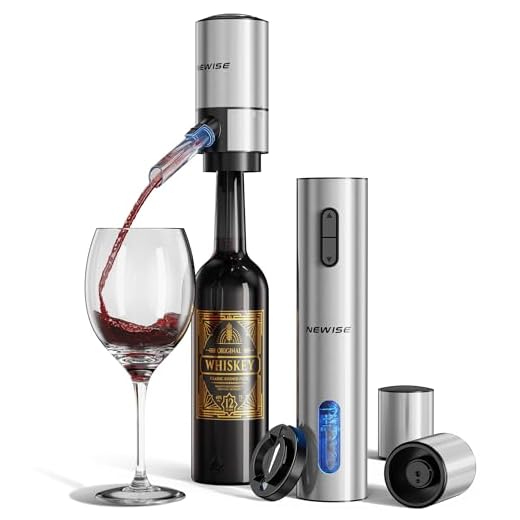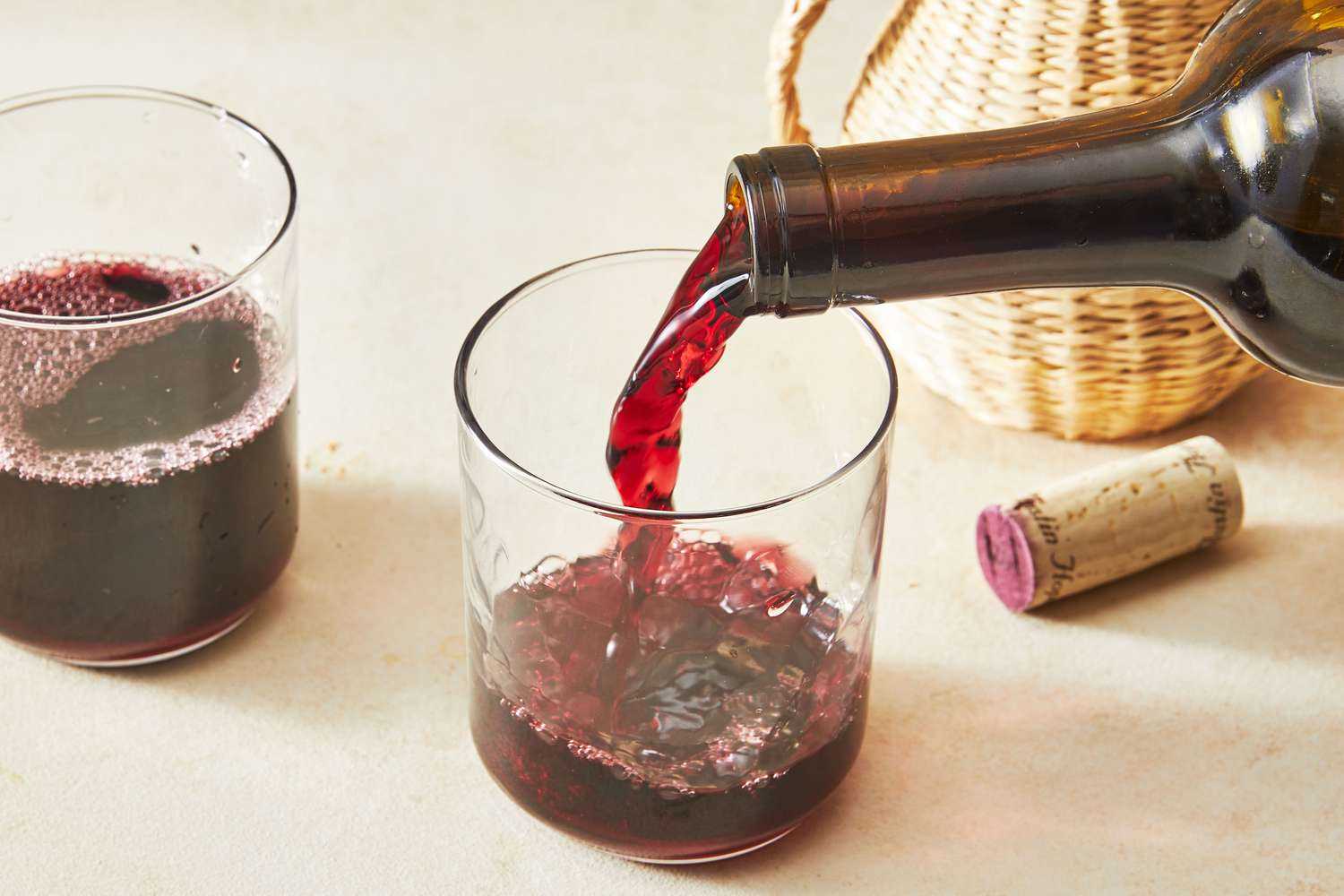



For those who enjoy a glass of opened red varietals, maintaining quality is paramount. Ideally, consumption within three to five days post-bottle opening is recommended. This timeframe allows the flavors to remain vibrant while minimizing deterioration.
Storing these beverages in a cool, dark place is crucial. If a cellar or dedicated wine fridge is unavailable, a pantry or cupboard away from heat sources is acceptable. This method helps slow oxidation and preserves the intended taste profile.
Consider sealing the bottle with a cork or a specialized stopper designed for wine preservation. Vacuum pumps can also be beneficial, as they remove air and reduce oxidation. Each of these options contributes to extending the enjoyment of the beverage beyond the initial pour.
Temperature fluctuations can adversely affect the integrity of the flavors, so maintaining a consistent environment is advised. Avoid exposure to direct sunlight or areas with high humidity, as these factors can lead to spoilage.
Optimal Storage Conditions Post-Opening
Store your bottle upright in a cool, dark place. The absence of light and heat is essential for maintaining flavor integrity. Aim for a range of 55°F to 65°F (13°C to 18°C). If ambient conditions exceed this range, consider a wine refrigerator or a cooler area in your home.
Utilizing Wine Preservation Tools
Employ vacuum pumps or inert gas systems to minimize oxidation. These tools can significantly prolong the life of your beverage. Always reseal tightly with the original cork or a specialized stopper to limit air exposure.
Monitoring for Changes

Regularly assess the aroma and taste during the days following opening. While some varietals can last several days, others may show signs of deterioration within 24 hours. Trust your palate; if the flavor deviates, it may be time to discard the remaining liquid.
Understanding the Impact of Oxygen on Opened Wine
Once a bottle is uncorked, exposure to air initiates a process that can significantly alter its character. Oxygen interacts with various compounds in the liquid, leading to oxidation, which can enhance certain flavors but also diminish others over time.
Oxidation Process

Oxidation occurs when oxygen molecules react with phenolic compounds, acids, and alcohol present. Initially, this can result in the emergence of more complex aromas, deepening the sensory experience. However, prolonged exposure transforms vibrant notes into dull, flat characteristics. Typically, a bottle starts to lose its peak quality within a few days to a week.
Signs of Oxidation
Identifying the effects of oxidation is straightforward. Look for a shift in color towards a browner hue, which indicates age and loss of freshness. Additionally, the aroma may evolve from fruity and floral to nutty or vinegary. A taste test can reveal a lack of vibrancy, with diminished fruit flavors and a more pronounced acidity.
To mitigate negative effects, consider transferring the contents into a smaller container to reduce air exposure or using a vacuum pump to remove air from the bottle. These methods can prolong the enjoyment of an opened bottle, allowing for a better experience with each pour.
Optimal Conditions for Storing Opened Red Varietals
For maintaining the quality of an opened bottle of red varietal, aim for a range between 55°F to 65°F (13°C to 18°C). This range preserves the flavors and aromas, allowing for a more enjoyable experience during your next pour.
Ensure the environment avoids direct sunlight and significant fluctuations. A consistent setting plays a vital role in preventing oxidation and spoilage. If possible, store the bottle in a dark area, away from heat sources or appliances that generate warmth.
Impact of Humidity on Opened Bottles
Humidity levels between 50% and 70% are ideal. High humidity keeps corks moist, preventing them from drying out, which can lead to oxidation. Conversely, low humidity may cause corks to shrink, allowing air to enter the bottle and adversely affecting the contents.
Storage Solutions
Utilize a wine stopper or vacuum pump to minimize air exposure. These tools can significantly enhance preservation. Additionally, consider an insulated wine cooler if ambient conditions fluctuate frequently. This ensures a stable environment for your opened bottle.
Signs of Spoilage in Opened Red Wine
Look for these indicators to determine if a bottle has turned:
| Sign | Description |
|---|---|
| Off Odor | A vinegar-like smell or a musty aroma signals oxidation or bacterial growth. |
| Color Change | Darkening or browning suggests significant oxidation, impacting flavor. |
| Fizz | Unwanted bubbles indicate fermentation due to spoilage. |
| Taste | If it tastes sour or unbalanced, it’s likely past its prime. |
| Cloudiness | Particles or haze may show contamination or spoilage. |
Regularly checking these factors ensures enjoyment of each pour and prevents disappointment. Proper storage minimizes spoilage, allowing for longer enjoyment of the flavors you love.
Methods to Extend the Freshness of Opened Red Wine
Utilizing proper techniques can significantly prolong the life of your opened bottle. Here are some effective strategies:
1. Re-corking
- Always re-cork the bottle tightly after serving to minimize exposure to air.
- If possible, use the original cork with the same side down that was in contact with the wine.
2. Wine Preservation Systems
- Consider investing in a vacuum pump to remove air from the bottle, reducing oxidation.
- Inert gas systems can also be useful; they displace oxygen and create a protective layer above the liquid.
3. Refrigeration
- Chill the bottle in the refrigerator. Cooler temperatures slow down the oxidation process.
- Even red varieties can benefit from refrigeration, especially lighter-bodied ones.
4. Smaller Containers
- If a full bottle isn’t consumed, transfer remaining liquid to a smaller, airtight container.
- This reduces the amount of air in contact with the wine, helping preserve its character.
5. Avoiding Light and Heat
- Store the bottle in a dark place away from direct sunlight and heat sources.
- Light and elevated temperatures can degrade the wine’s quality over time.
Implementing these methods can help maintain the integrity and enjoyment of your opened bottle for days or even weeks. Remember, the key is to limit oxygen exposure and keep the wine at optimal conditions.
Comparing Different Types of Red Wine Storage Solutions
For optimal preservation of opened bottles, consider various storage options. Vacuum sealers effectively reduce oxygen exposure, extending the lifespan of the beverage. These devices remove air from the bottle, creating a tight seal that minimizes oxidation. For those who prefer a simpler approach, using a cork can also help, although it is less effective than vacuum methods.
Another option is wine preservation systems that utilize inert gas. These systems replace oxygen in the bottle with gases like argon or nitrogen, preventing spoilage. They are often more expensive but provide a superior solution for long-term storage of opened bottles.
Temperature-controlled wine fridges offer a consistent environment, ideal for maintaining quality. These units can help regulate the climate, ensuring that the drink remains at an optimal level. If space is limited, a simple solution like a dedicated shelf in a regular fridge can also work, particularly for shorter periods.
For those who enjoy sampling multiple varieties, consider using half-bottles. These smaller containers reduce air contact, making them a practical choice for tasting without waste. Alternatively, decanters designed for short-term use can enhance flavor while limiting exposure to air.
Ultimately, the method chosen will depend on personal preferences and frequency of use. Each solution has its advantages, ensuring that the wine remains enjoyable for as long as possible.
How Long Can Opened Red Wine Last at Room Temperature?
Opened bottles of wine typically remain at their best for about 3 to 5 days when stored at ambient conditions. However, this duration can vary based on several factors, including the type of wine and the storage method employed.
For lighter varieties, such as Pinot Noir, aim for consuming within 3 days. Full-bodied selections like Cabernet Sauvignon may last up to 5 days before noticeable degradation occurs. The presence of tannins and acidity can influence these timelines, with bolder wines often showing greater resilience.
Always ensure the cork is resealed or a wine stopper is used to minimize exposure to air, which accelerates the oxidation process. Keeping the bottle upright might also reduce the wine’s contact with air, further extending its drinkability.
Monitoring flavor changes is essential; any shift towards sourness or a noticeable loss of aroma indicates spoilage. For optimal enjoyment, prioritize consuming opened bottles promptly. If unable to finish within this timeframe, consider alternative preservation methods to prolong quality.
Best Practices for Serving Opened Red Wine
To maintain the quality of your opened bottle, serve it within three to five days. Store it upright to minimize oxygen exposure, and ensure the cork is tightly sealed after each pour.
Temperature Considerations
While storing, aim for a cool environment. Ideally, the range should be between 55°F to 65°F. If conditions are warmer, consider a wine cooler. Avoid placing the bottle in direct sunlight or near heat sources.
Glassware Selection
- Choose a large-bowled glass to enhance aeration, allowing flavors to bloom.
- Use clean, dry glassware to prevent contamination that can spoil the taste.
For easy cleanup of spills and messes, check out the best scrubber for quarry tiles.
Aerating Techniques
- Consider decanting to introduce oxygen, which can enhance the wine’s aroma and flavor.
- Swirling in the glass can also help release volatile compounds, enriching the experience.
By following these best practices, enjoyment of your opened bottle will be maximized for as long as possible.
FAQ:
Is it safe to keep red wine at room temperature after opening it?
Yes, it is generally safe to keep red wine at room temperature after opening. However, the quality of the wine may start to deteriorate after a few days due to exposure to oxygen. Red wines are usually more resilient than white wines in this regard, but it is still best to consume them within a few days for optimal taste. If you notice any off smells or flavors, it may be best to discard it.
How long can I keep red wine at room temperature after opening before it goes bad?
After opening, red wine can typically be kept at room temperature for about 3 to 5 days. Factors such as the type of wine, how it was stored before opening, and the room temperature can affect its longevity. For example, fuller-bodied wines may last a bit longer than lighter ones. To extend its freshness, consider re-corking the bottle and storing it in a cool, dark place. If you notice changes in taste or smell, it’s a sign that the wine is no longer good.








